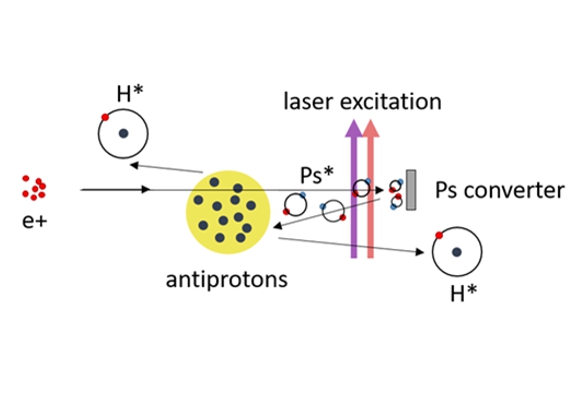Anti-matter research is changing gears

While the past decade was dominated by proof-of-concept experiments with antihydrogen at the Antiproton Decelerator (AD) at CERN, scientists are now using this extremely rare particle for precision measurements. The symmetries between matter and antimatter are being tested, and, if violated, could give us a hint at the answer to the great question of why our universe exists.
In 2018, the AEgIS (Antihydrogen Experiment: Gravity, Interferometry, Spectroscopy) experiment at the AD facility succeeded in producing pulses of antihydrogen atoms with excellent time precision. Meanwhile the ALPHA (Antihydrogen Laser Physics Apparatus) experiment performed a series of spectroscopic measurements on the first excited levels of antihydrogen. More recently BASE (Baryon Antibaryon Symmetry Experiment) has measured the antiproton to proton charge-mass ratio to an accuracy of 16-parts-per-trillion. None of these have found any violations of symmetry.
During the recent long shutdown period at CERN, the new ELENA (Extra Low Energy Antiproton) storage ring was commissioned, and all AD experiments were connected to it, yielding a 100-fold increase of trappable antiprotons.
AEgIS now has arrived at its second phase with the goal to create an intense pulsed beam of antihydrogen atoms for gravitational measurements. The increase in the number of antiprotons is one of the three major developments which will help to reach this goal. Another is a novel positron-to-positronium (Ps) converter target based on nano channeled silicon with the ability to emit up to five times more positronium than the old converter did, which also increases the antihydrogen production rate. Finally, in the new experimental alignment positronium and antiprotons only propagate along the beam axis, avoiding Ps losses due to self-ionization by moving perpendicular to strong magnetic fields which was found previously.
Several new groups have recently joined AEgIS. These are Warsaw University of Technology, Raman Research Institute, Nikolaus-Copernicus-Universität Toruń, the Polish Academy of Sciences and the University of Liverpool. The addition of these groups significantly increases the scientific expertise within the collaboration; the formation of positronium beams for QED precision measurements and creating novel antiproton systems for fundamental studies on hadronic (anti)matter are some of the key topics to be addressed soon.
Stay tuned!